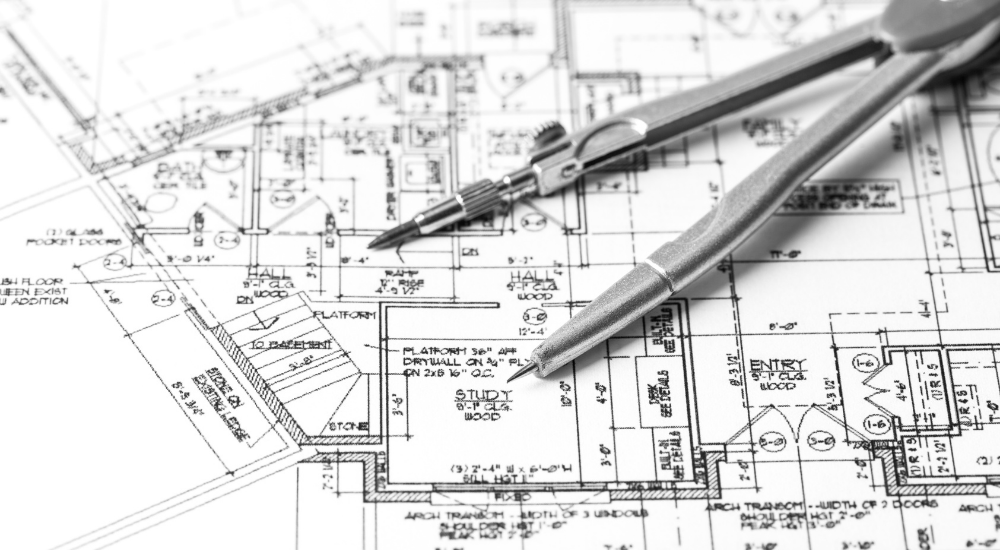Architect Salary Overview by Region and Seniority
Architect Salary Overview by Region and Seniority
Blog Article
Recognizing the Diverse Job Paths Available for Aspiring Architect
As an aspiring Architect, you have a globe of profession paths waiting for you. Whether you're attracted to standard design or the subtleties of sustainable layout, there's a niche that straightens with your interests.
Standard Design: Creating Structures and buildings
Typical style focuses on making structures and frameworks that mix performance with aesthetic appeal. Your layouts can reflect cultural heritage, showcasing regional customs while satisfying contemporary needs.
You'll establish skills in drafting, model-making, and website evaluation, permitting you to envision and connect your ideas effectively. Involving with clients, you'll need to comprehend their vision and convert it right into possible layouts.
Additionally, constructing codes and sustainability methods are vital in your work, ensuring your structures are ecologically pleasant and risk-free. As you grow in your career, you'll locate chances in property, industrial, and even repair projects, each offering special challenges. Embracing standard architecture leads the way for a fulfilling profession that admires the past while forming the future.
Urban Preparation: Forming Neighborhoods and Public Spaces
As an ambitious Architect, you can play a crucial role as a metropolitan planner, changing exactly how communities communicate and operate. By employing area involvement strategies, you'll guarantee that citizens have a voice fit their atmosphere. Plus, incorporating lasting design concepts will certainly help create rooms that not just fulfill today's requirements however likewise secure the future.
Role of Urban Planners
While lots of could think of architects as the sole dreamers behind structures, metropolitan organizers play an important role in forming the broader landscape of communities and public areas. By working together with different stakeholders, you'll assist develop parks, transport systems, and residential areas that promote social communication and ease of access. Your knowledge in spatial design and neighborhood characteristics permits you to envision future growth while protecting cultural heritage.
Area Engagement Approaches
Effective neighborhood involvement techniques are vital for urban planners to ensure that the voices of residents are heard and valued in the preparation procedure. To foster purposeful discussion, you should focus on open online forums and workshops where area participants can reveal their ideas and issues. Use studies and social media sites to reach a broader target market, guaranteeing varied point of views are consisted of. Working together with regional organizations can boost depend on and facilitate much deeper links. It is necessary to offer clear details concerning proposed jobs and decision-making procedures, enabling homeowners to really feel enlightened and empowered. By proactively integrating and paying attention feedback, you'll develop rooms that mirror the neighborhood's needs, ultimately bring about even more successful and sustainable urban atmospheres. Accept openness and constant dialogue for long-term impact.
Sustainable Design Concepts
When designing city spaces, including sustainable design concepts is important for producing settings that flourish both environmentally and socially. You ought to begin by focusing on energy efficiency, using materials that lower waste and advertise recycling. Think about integrating eco-friendly spaces, like gardens and parks, to boost biodiversity and boost air top quality. Advertising walkability and public transport can lessen reliance on autos, promoting a healthier neighborhood.
Designing with water preservation in mind is also essential-- assume regarding rainfall yards and permeable surfaces to handle stormwater. Including neighborhood members throughout the planning process guarantees that the rooms you develop fulfill their demands and motivate social interaction. By embracing these principles, you'll add to dynamic, sustainable city landscapes that profit every person.

Landscape Architecture: Creating Sustainable Outside Atmospheres
As you check out landscape design, you'll find crucial design principles that create practical and attractive outside spaces. Lasting techniques play an essential function in making certain these environments thrive while reducing environmental influence. And also, you'll find a variety of profession possibilities that allow you to make a real difference in just how people communicate with nature.
Style Concepts in Landscape
Recognizing layout principles in landscape style is important for creating lasting outdoor atmospheres that integrate with nature. You'll require to ponder elements like percentage, scale, and equilibrium to assure your layouts feel natural and welcoming. Furthermore, pay attention to seasonal changes, creating with materials that complement the environments year-round.
Sustainable Practices Summary
Lasting practices in landscape style not just focus on looks yet also prioritize eco-friendly health and wellness and resource conservation. You can design areas that promote dirt health, such as utilizing natural products and exercising permaculture concepts. Ultimately, these techniques assure your layouts profit both people and the environment for years to come.
Job Opportunities Expedition
With a strong foundation in lasting practices, landscape style offers a range of profession paths that permit you to make a meaningful influence on the atmosphere. Urban planners usually work together with landscape architects to develop green spaces in metropolitan settings, improving city livability. If you're passionate about education and learning, take into consideration coming to be a landscape design teacher, motivating future generations.
Sustainable Design: Concentrating On Eco-Friendly Practices
As you discover your job in design, accepting environmentally friendly methods can establish you apart in an affordable field. Lasting style concentrates on developing buildings that decrease environmental influence while improving resident wellness. By incorporating renewable products, energy-efficient systems, and sustainable building strategies, you'll contribute to a greener future.
Start by getting understanding of green qualifications like LEED or BREEAM, which can strengthen your credentials. Take into consideration exactly how all-natural light, ventilation, and thermal efficiency can maximize layout. Team up with pop over to these guys designers and ecological professionals to introduce options that decrease waste and conserve resources.
Do not neglect the importance of community participation-- interesting regional stakeholders can inspire designs that balance with the atmosphere. As customers increasingly focus on sustainability, your expertise in environmentally friendly methods will not only draw in jobs but likewise satisfy your interest for accountable design. Embrace this crucial element of the occupation, and view your job prosper.
Historic Conservation: Protecting and Restoring Social Heritage
While you start on your architectural journey, consider the vital role of historical preservation in preserving our cultural heritage. This area concentrates on the security and reconstruction of significant structures, sites, and structures that inform the stories of our past. By taking part in historical preservation, you'll aid safeguard the building heritage that shapes neighborhood identity.
As a historical conservation Architect, you'll assess historical significance and examine the condition of structures. You'll work carefully with historians and guardians to ensure genuine reconstruction strategies are used. This job path enables you to mix creativity with research study, enabling you to make options that respect original materials and workmanship.
Your work not just adds to sustainability by reusing existing structures yet likewise promotes a sense of pride within neighborhoods. Welcoming this path will certainly help you end up being a guardian of history, protecting the tales and appearances that improve our lives.
Inside Style: Enhancing Indoor Spaces
Historical preservation and indoor design both share a commitment to improving the constructed atmosphere, however they concentrate on different facets. While historical preservation emphasizes keeping a structure's cultural and historical value, interior architecture absolutely nos in on optimizing interior areas for functionality and visual appeals.
As a hopeful Architect, you'll locate that indoor design allows you to blend imagination with technical skills. You'll develop rooms that not just look good but likewise promote convenience and efficiency. This field involves comprehending just how light, color, and products connect within a space, influencing state of mind and use.
You'll service numerous projects, from household homes to industrial offices, ensuring that each environment meets the requirements of its owners. By focusing on customer experience, you can transform insides right into motivating and functional areas, making a considerable influence on just how people connect with their surroundings. Accept the chance to enhance indoor settings and shape the way people live and function.
Industrial Design: Merging Functionality With Aesthetic Appeals
Industrial layout plays a crucial function in developing items that effortlessly mix appearances with performance, making certain that what you use daily is not just aesthetically appealing yet also practical. As an aspiring Architect, you could immerse on your own in this area, concentrating on creating every little thing from furnishings to customer electronics. Your work entails understanding a fantastic read individual demands, products, and making procedures, permitting you to create cutting-edge solutions that boost day-to-day experiences.
In industrial design, you'll commonly collaborate with suppliers, marketing experts, and designers, ensuring that your designs are not just attractive however likewise possible. You'll find out to balance form and feature, prioritizing usability without giving up design. By honing your skills in laying out, 3D modeling, and prototyping, you'll be well-equipped to bring your ideas to life. This career course supplies a dynamic environment where creative thinking satisfies practicality, making it a gratifying choice for engineers interested in forming the products of tomorrow.
Regularly Asked Inquiries
What Educational Accreditations Do I Required to Come To Be a Designer?
To come to be an architect, you'll require a specialist degree in design, commonly a Bachelor's or Master's. In addition, you'll need to complete a teaching fellowship and pass the Architect Enrollment Exam to practice lawfully.
Are There Qualification Demands for Different Architectural Occupation Paths?
Yes, there're certification demands for numerous building courses. Architect. You'll require to pass exams, complete teaching fellowships, and sometimes seek specialized training, depending upon your selected emphasis, like landscape style, urban layout, or historic preservation
What Software Skills Are Important for Designers Today?

Exactly How Can I Gain Practical Experience While Studying Style?
You can get sensible go right here experience by interning at building firms, taking part in style competitors, offering for community projects, or working together with classmates on real-world tasks. These opportunities boost your abilities and construct important connections in the market.
What Job Opportunities Exist Outdoors Typical Style Firms?
You can check out different work chances outside conventional design companies, like urban planning, interior style, landscape style, building administration, realty growth, or perhaps duties in sustainability consulting. Each deals distinct difficulties and rewards.
Whether you're drawn to typical architecture or the subtleties of lasting design, there's a niche that aligns with your passions.When making urban spaces, integrating sustainable design concepts is crucial for creating settings that thrive both ecologically and socially.As you discover landscape architecture, you'll discover vital design concepts that develop practical and gorgeous exterior rooms.Comprehending layout principles in landscape design is crucial for creating lasting outdoor atmospheres that integrate with nature.In commercial layout, you'll typically work together with marketing experts, makers, and designers, ensuring that your layouts are not only beautiful but also viable.
Report this page